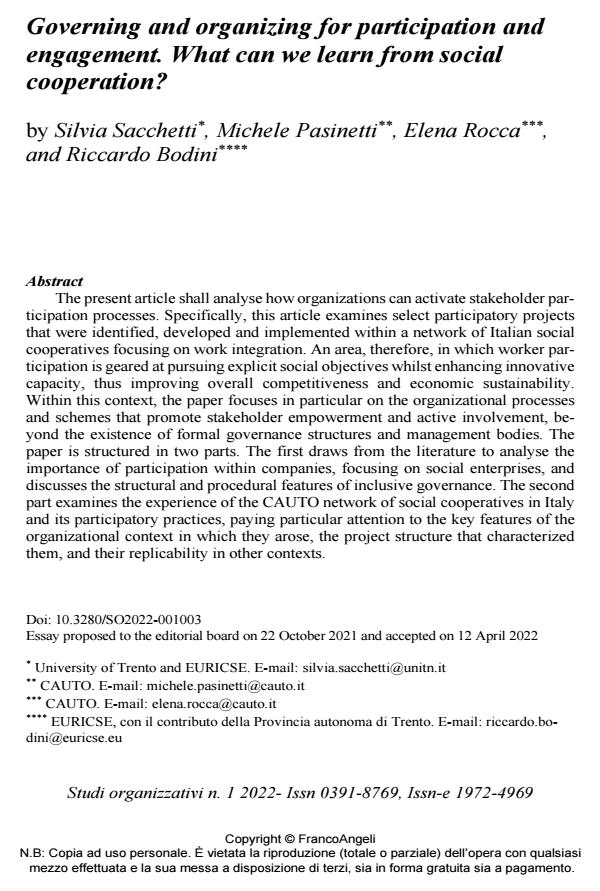Governing and organizing for participation and engagement. What can we learn from social cooperation?
Journal title STUDI ORGANIZZATIVI
Author/s Silvia Sacchetti, Michele Pasinetti, Elena Rocca, Riccardo Bodini
Publishing Year 2022 Issue 2022/1
Language English Pages 33 P. 50-82 File size 339 KB
DOI 10.3280/SO2022-001003
DOI is like a bar code for intellectual property: to have more infomation
click here
Below, you can see the article first page
If you want to buy this article in PDF format, you can do it, following the instructions to buy download credits

FrancoAngeli is member of Publishers International Linking Association, Inc (PILA), a not-for-profit association which run the CrossRef service enabling links to and from online scholarly content.
The present article shall analyse how organizations can activate stakeholder participation processes. Specifically, this article examines select participatory projects that were identified, developed and implemented within a network of Italian social cooperatives focusing on work integration. An area, therefore, in which worker participation is geared at pursuing explicit social objectives whilst enhancing innovative capacity, thus improving overall competitiveness and economic sustainability. Within this context, the paper focuses in particular on the organizational processes and schemes that promote stakeholder empowerment and active involvement, beyond the existence of formal governance structures and management bodies. The paper is structured in two parts. The first draws from the literature to analyse the importance of participation within companies, focusing on social enterprises, and discusses the structural and procedural features of inclusive governance. The second part examines the experience of the CAUTO network of social cooperatives in Italy and its participatory practices, paying particular attention to the key features of the organizational context in which they arose, the project structure that characterized them, and their replicability in other contexts.
Keywords: Inclusive governance, participatory projects, stakeholder engagement, social cooperation, social enterprise, enterprise management, Italy.
Silvia Sacchetti, Michele Pasinetti, Elena Rocca, Riccardo Bodini, Governing and organizing for participation and engagement. What can we learn from social cooperation? in "STUDI ORGANIZZATIVI " 1/2022, pp 50-82, DOI: 10.3280/SO2022-001003